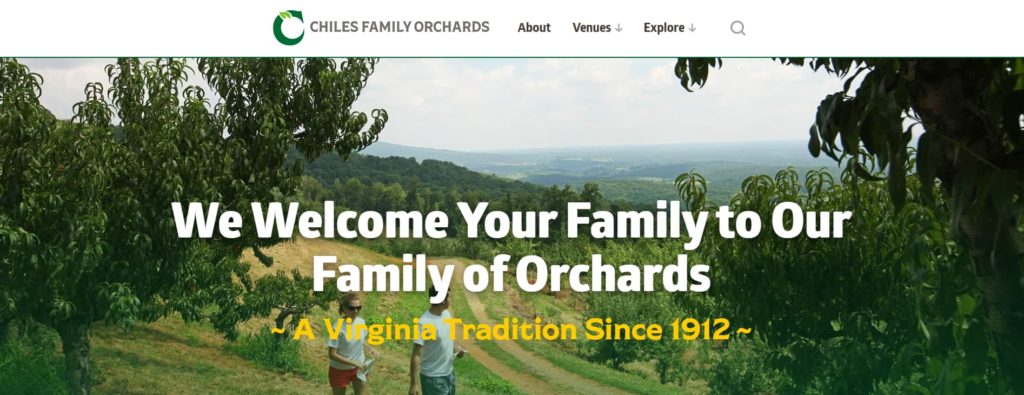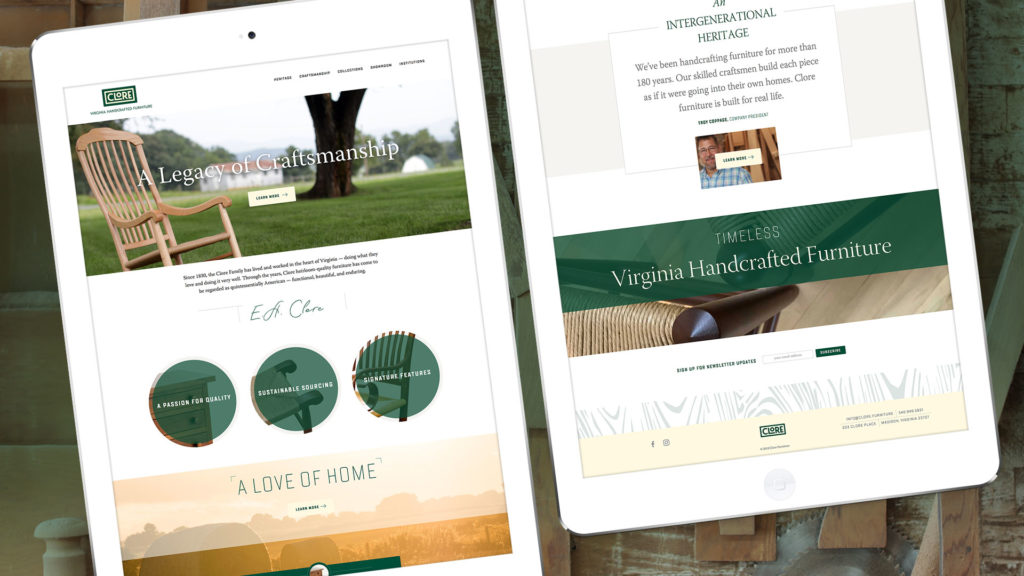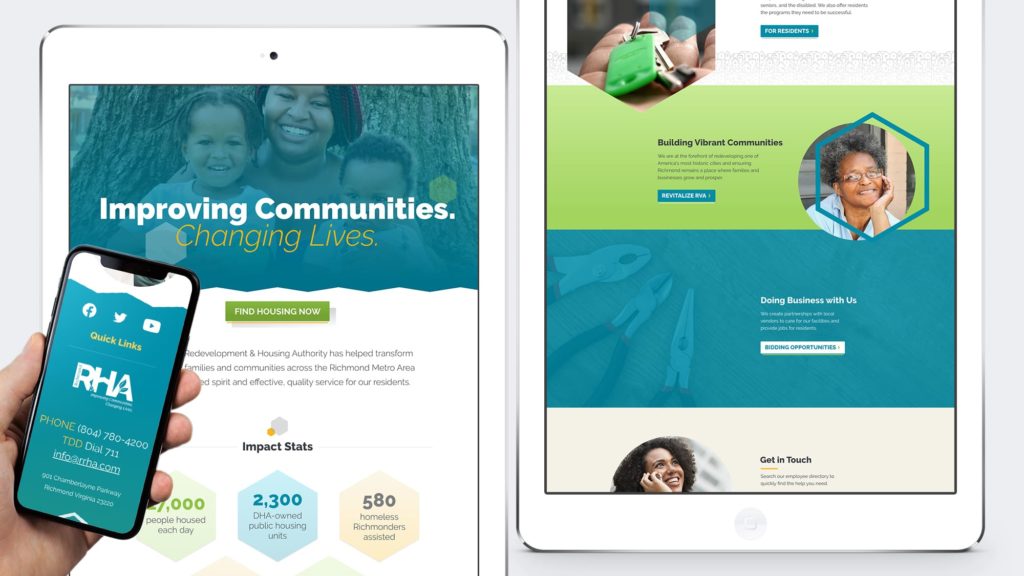
When you begin searching for the right web developer, you surely notice the wide range of prices. You probably ask yourself: what accounts for the difference? Is it just a matter of talent and experience?
Well, there are really two different services being offered by website creators. One involves configuring a website from a premade template. The other involves creating a fully custom site.
You can get the premade, off-the-shelf template for a lower upfront cost. So it’s natural to wonder if a custom site is worth the extra investment.
Put simply, a fully custom website will:
- elevate user experience
- increase your operational success
That means that a fully custom site is ultimately better for your bottom line. But before elaborating on the benefits, we need to talk about "custom."
Just how custom is that “custom” website?
When a website creator uses an off-the-shelf template, they select from preset options for colors, fonts, or page layouts. They might call their work custom, since choosing from those presets is technically a kind of customization. It's just an extremely limited kind, which is why we call it configuration instead.
There are clues that services you're being offered won't be fully custom. For instance, is the creator advertising a single low flat rate, without needing to know what kind of site and capabilities you need? Are they using a platform like Squarespace, Wix, or Weebly, which offer only configurable templates?
But to find out if the service being offered is fully custom web development, the most direct question to ask is: Are they coding the template / theme, or buying it?
The fundamental difference between custom and configured is that a configured template doesn't give web developers full access to its underlying code.
It's that access which lets a custom developer elevate user experience and operational success.
Why do we use WordPress when building our custom websites? Read our blog post comparing WordPress CMS to proprietary website builders to find out.

Elevate User Experience
Tailor to your audience
Template makers build off-the-shelf templates for general use, which means they don’t make them with your specific audience in mind. Custom development lets your developer create the best experience for your specific users, by beginning with questions like:
- What key pieces of information does your audience want to access?
- Which features do they like or demand?
- What are their frustrations?
- Do they need to be able to convert their interest into a specific kind of action, like a purchase or a newsletter sign-up?
A custom build crafts the site's design elements so that they complement one another and best serve your users and your goals.
For instance, when Ivy designed a website for Chiles Family Orchards, we needed for it to include their four prominent venues. Having them all together in one site fosters overall brand unity, greater awareness among customers about the opportunities offered, and the potential for more streamlined content management.
It also presented challenges, which needed to be met by creative, flexible design. With four venues, plus pop-up locations, a blog, an online store, a newsletter signup, and more, the website could easily have gotten cluttered and confusing.
If users can't quickly and intuitively reach their goals, they'll leave. That means a drop in engagement and lead conversion. When it's not always crystal clear where each event takes place, a customer might pack the kids in the car, drive twenty minutes, and discover too late that the pancake breakfast they'd meant to attend is actually at a completely different venue!

On the site we created, we streamlined the user’s experience through the simple use of two main dropdown menus ("Venues" and "Explore"). A first-time visitor can quickly survey the options, see "Fruit" as one of three simple options under "Explore," and then quickly reach the content about pick-your-own fruits that she was seeking.
Whether a user comes to the site to learn more about an event she saw on Facebook, to order a holiday pie, to find out when she might pick her own apples, or simply to look at some pictures of delicious views and foods, the design lets her get there with minimum fuss and minimum clicks.
Thanks to design flexibility, we could also create a distinct look and feel for each venue. Each fits into a unified aesthetic for the site as a whole, while clearly signaling to a viewer which venue a given page belongs to. Speaking of aesthetics…
Present a better-looking, more unique public image
Because they're shared by so many sites, off-the-shelf templates struggle to stand out.
A custom website doesn't have to feature bold and cutting-edge design, if that's not right for your audience. But a fully custom design ensures that your site will never look just like a hundred others, nor fail to convey your unique brand.
At Ivy Group, our website development process goes like this:
- The creative director works with you to dig into your organization's goals, to understand your audience, and to create a plan for the desired website architecture and interrelated functions
- Our talented graphic designer dreams up an original design and drafts all the visual elements to be maximally attractive and aligned with your brand
- The web developer translates the art into the coded framework of the site and codes unique functionality for your site
Consider Clore Furniture's website.

In addition to making the website content-manageable, accessible, responsive, optimizable, and searchable, we sought to make it beautiful.
Quality photographs showcasing both the local landscape and up-close details of the hand-crafted furniture were blended seamlessly with all the other design elements, from font and color to the overall layout, to evoke the beauty, legacy, and romance of the brand.
Meanwhile...
What if we used an off-the-shelf template? Several key features identified in the early discovery and design process wouldn't be achievable. The graphic designer might not find room to be involved at all. Throughout the process, the developer would be stymied by limited functionality and options.
As one tiny example, the template might only provide three breakpoints—that is three formatting settings, with one intended for desktops, one for tablets, and one more mobile—and we wouldn't be able to customize those breakpoints to best suit the particular content of the website. That, in turn, could lead to awkward visual elements like extra spacing and scrollbars for some users.
In short, all the necessary compromises would lead to a site which looks worse, doesn't best serve your and your users' needs, and so doesn't meet your goals.
Fully-custom development wipes those concerns away. It opens the door to the full range of possibilities.
"A fully custom website begins with an artist's work and is brought to life through programming."
Leslie Padilla, Ivy Group Developer

Meet higher accessibility standards
Imagine you have a sight impairment, and you arrive on a new website. You're using a screen reader, which reads the website to you so you can navigate it.
It’s essential that the site has labels and alternative text for its visual elements. You’ll also need to reach navigation options quickly and be able to follow those options through keyboard commands. Would you want to listen as your reader moves through several minutes of irrelevant content before reaching your desired navigation option?
Some accessibility features, like closed captioning for video/audio content, are fairly straightforward. Others, like optimizing site navigation for people using screen readers, can be more complex.
The coding techniques involved in optimizing for accessibility are often unseen, but they're crucial. They shape how many people experience your site, and whether your site works for them at all. Many web users have impairments, and still more users can be functionally impaired at various times. Improving your site's visual contrast, for instance, will benefit everyone who has reduced their screen brightness to save on battery life.
Finally, search algorithms heavily and increasingly prioritize accessibility in their rankings. That means meeting these standards also improves your SEO.
Want a more in-depth look at why accessibility matters for all sites? Read the blog!
All these elements of good user experience and good design naturally help you to...
Increase operational success
Gain scalability and flexibility
Maybe there's a premade template out there which adequately meets your current needs. What about when those needs change? What if…
- a year from now you need the site to incorporate an entirely new function?
- you expand a business line or launch a new venture?
- a change occurs which impacts browser compatibility or web security?
With the configured template, you (and your developer) are at the mercy of the template's creator. If they don't offer that function you need, there's no way to add it. If they don't release the necessary security, accessibility, or compatibility updates—or take a long time to get around to them—your site, your users' experience, and perhaps your bottom line all suffer.

Often your only choice at that point will be to start all over with a new website. Suddenly any up-front savings will have vanished.
When you contact your custom developer to incorporate new features, you'll have to pay for the time that requires, but you won't be needing to pay for a whole new website. Instead, the developer can more easily modify the site to accommodate greater traffic, new functions or services, security fixes, and any navigation changes, which now better serve your audience.
Your developer will be able to easily and efficiently make any changes to keep your site meeting best web practices.
Enjoy a better content management experience
This last benefit is a crucial one. Your website's visitors aren't the only people whose user experience matters.
While site management is fixed for an off-the-shelf template, it's fully modifiable for a custom developer. Here at Ivy Group, we create a comfortable back-end experience for clients to manage their websites, individualized to their particular needs. That includes ensuring nontechnical staff can easily perform the work.
In 2021, Global Alliance for Behavioral Health and Global Justice needed a new website to help meet the evolving expectations of members and potential members, as well as the evolving needs of the organization itself.

When Ivy built Global Alliance's new website, our developers started with their needs—like the need to be publishing a variety of content types—in determining how to:
- Group and display the focus areas available on the backend of the website
- Make key information easier to re-use throughout the site
- Provide the look, feel, and features that will best serve Global Alliance for years to come
Then we provided both a training session and customized documentation, so that staff could easily and confidently handle all their website functions. Their team know that if they ever need it, they can reach us for ongoing support.
For most organizations, a website is something that will require regular attention, in the form of updates, monitoring, and other monthly, weekly, or daily activity. Having a better back-end experience, customized to your needs, benefits your operations for years to come. It can save you money and time—those precious resources—while reducing stress and burnout for you and your employees.
Choosing Fully Custom
You know your organization. A full-service agency like Ivy Group—which unites experienced marketers, designers, and website developers—knows how to create great websites custom-crafted to your needs.
When you choose fully custom, your site will be rooted in expertise on both sides of the partnership and built around best serving your users and your organization. It will draw and retain more visitors through its better function, appeal, and search engine ranking. And it will provide better value into the future, thanks to its flexibility.
We're always happy to have a conversation about how our own custom web development can serve your organization.
Category: Web & Technology
Tags: design, good design matters, websites, wordpress